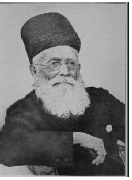Students can refer to the following Sample Paper ICSE Class 10 History Civics Set F with Answers provided below based on the latest syllabus and examination guidelines issued for ICSE History Civics. All specimen papers have been prepared covering all chapters given in ICSE History Civics book for Class 10. You should also refer to ICSE Class 10 History Civics Solutions.
Sample Paper ICSE Class 10 History Civics Set F with Answers
Grade: X
Subject : H.C.G. – 1
• You will not be allowed to write during the first 15 minutes.
• This time is to be spent in reading the question paper.
• The time given at the head of this paper is the time allowed for writing the answers.
• This paper consists of 4 printed pages.
Attempt seven questions in all.
Part I is compulsory. Attempt five questions from Part II, two out of three questions from Section
A and three out of five questions from Section B.
The intended marks for questions or parts of questions are given in brackets [ ].
PART 1 (30 Marks)
Attempt all questions from this part
Question I
(a) How is the Speaker of the Lok Sabha elected? [1]
(b) What is the quorum to hold the meetings of the Rajya Sabha? [1]
(c) How long can the Vice-President continue to hold office even after the expiry of his term? [1]
(d) Who is the head of the Union Council of Ministers? [1]
(e) Write any two subjects mentioned in the Union List? [1]
(f) What is meant by the Original jurisdiction of the Supreme Court? [1]
(g) What is an Adjournment Motion? [1]
(h) Who is the final interpreter of the Constitution? [1]
(i) Mention two types of cases in which the Supreme Court exercises Appeliate Jurisdiction. [1]
(j) Write any one advantage of the Lok adalat.
Question2
(a) Give the meaning of absentee sovereignty. Why was it resented by the Indians? [2]
(b) Name any two associations which acted as the forerunners of the Indian National Congress. [2]
(c) When did Congress working Committee adopt the Quit India Resolution? What did it state? [2]
(d) Mention any two points Congress consented to by Gandhi-Irwin Pact. [2]
(e) Who started Khilafat Movement in India? Why? [2]
(f) Mention any two objectives of the Indian National army. [2]
(g) Give any two causes of the First World War. [2]
(h) Mention any two provisions of the Indian Independence Act, 1947. [2]
(i) List any two objectives of the Non-aligned Movement. [2]
(j) What is meant by the ‘Policy of Appeasement’ followed by England and France? [2]
Part II (50 Marks)
Section A
Attempt any two questions from this section
Question 3
“Parliament is the legislative organ of the government that makes laws for the governance of the country.’ In this context, answer the following:
(a) Explain the powers of the Union Parliament with respect to matters in the Union list and Concurrent list. [3]
(b) Mention three instances when the Parliament can make laws on the subjects in the State list. [3]
(c) Enumerate any four ways through which Parliament exercises its control over Executive.
Question 4
Dr. Ambedkar said “Our President is the head of the state but not of the executive. He represents the nation but does not rule the nation.” In light of this statement, explain:
(a) any three Legislative powers of the President. [3]
(b) any three Discretionary powers of the President. [3]
(c) Executive powers of the President.
Question 5
‘The Constitution of India provides for a High Court for each state. Parliament may however establish a common High court for two or more states/Union territories.’ With reference to the High Courts, answer the following questions:
(a) Explain The High Court as the Court of Record. [3]
(b) Mention any three types of cases in which the High Court exercises its Original Jurisdiction. [3]
(c) Explain differences between Court of the district Judge and Sessions Court. [3]
Section B
Attempt any three questions from this section
Question 6
Study the picture given below and answer the following questions:

(a)
(i) Identify the leader given in the picture. [1]
(ii) Why is he known as India’s unofficial ambassador? [2]
(b) How did he expose the economic ills of India? [3]
(c) Explain his role in the Congress. [4]
Question 7
“Gandhiji used human courage, patience and sufferings as vehicles to achieve national goal of India’s independence.” In the light of this statement answer the following questions:
(a) What were the causes of the Civil Disobedience Movement? [3]
(b) Enumerate the Programme of the Civil Disobedience Movement? [3]
(c) Mention any four far-reaching effects of the Quit India Movement
Question 8
The Cabinet Mission Plan proposed a two-tiered federal union of British Provinces and Princely states. With reference to this describe the following:
(a) Federal Union [3]
(b) Grouping of Provinces [3]
(c) Formation of a Constituent assembly [4]
Question 9
With reference to the causes of the Second World War, answer the following questions:
(a) Explain how the ideologies of Fascism and Nazism led to the Second World War. [3]
(b) How did the Japanese invasion on China create conditions for the outbreak of the war? [3]
(c) How was the failure of the League of Nations responsible for the war? [4]
Question 10
The United Nations apart from its main organs also work through its allied agencies. In this context answer the following questions:
(a) Write the expanded form of UNESCO. Mention two of its functions in the field of education. [3]
(b) Explain three roles that the WHO plays in combating diseases. [3]
(c) Mention the functions of the UNICEF.